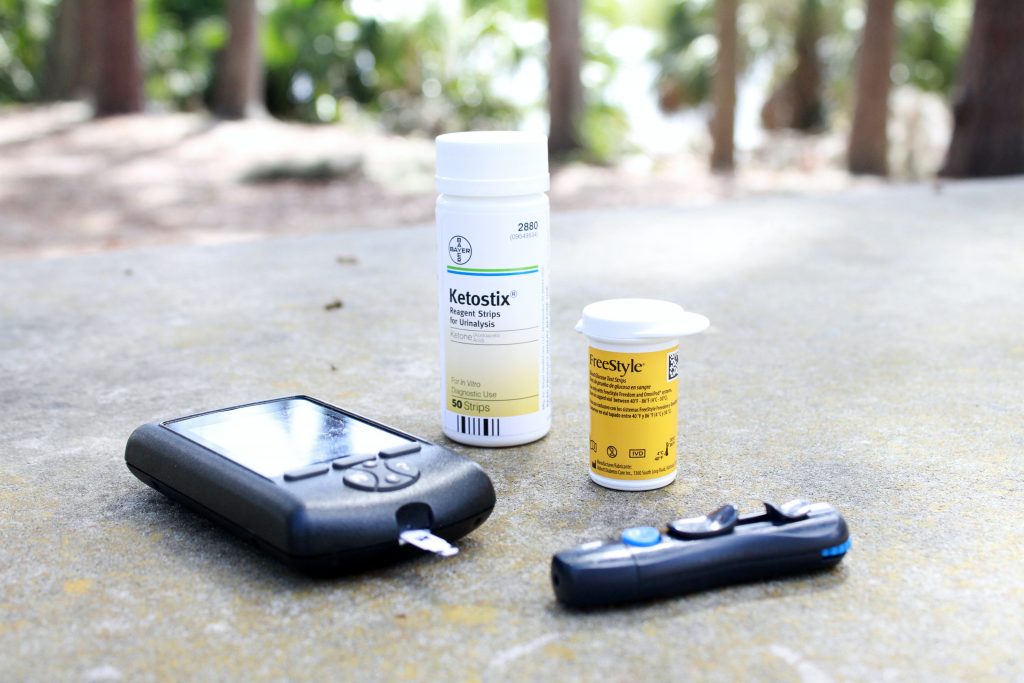Crafting compelling and informative content for a criminal defense attorney’s website blog requires a deep understanding of the target audience—individuals facing criminal charges in Utah. By addressing their needs and concerns, you can create engaging blog posts that explain complex legal concepts in a clear and accessible manner. Through case studies, real-life scenarios, and personal stories, you can showcase your expertise and experience, instilling confidence in potential clients and setting your firm apart. Additionally, incorporating keyword research and optimization techniques will ensure that your content is easily discoverable by search engines. Every blog post should conclude with a clear call-to-action, guiding readers to take the next step and seek the assistance they need promptly.

This image is property of images.unsplash.com.
Types of Child Abuse
Physical Abuse
Physical abuse refers to the intentional infliction of physical harm or injury on a child. This can include actions such as hitting, punching, kicking, burning, or any other form of physical violence. Physical abuse often leaves physical marks or bruises on the child’s body and can result in serious physical and emotional harm.
Emotional Abuse
Emotional abuse involves the persistent emotional maltreatment of a child, which can cause severe psychological harm. This type of abuse can include constant belittling or humiliation, rejecting or ignoring the child’s emotional needs, subjecting the child to constant criticism or threats, and isolating the child from social interactions or support systems.
Sexual Abuse
Sexual abuse refers to any form of sexual activity involving a child, which they cannot understand or consent to. This can include sexual touching, exposure to explicit content, or engaging the child in sexual acts. Sexual abuse has devastating consequences for the child’s physical, emotional, and psychological well-being and can have long-lasting effects on their development.
Neglect
Neglect occurs when a caregiver fails to provide the necessary physical, emotional, or educational needs for a child. This can include failure to provide adequate food, shelter, clothing, medical care, supervision, or emotional support. Neglect is a form of child abuse as it can result in serious harm, including malnutrition, illness, or developmental delays.
Signs and Symptoms of Child Abuse
Physical Signs
Physical signs of child abuse can include unexplained bruises, burns, or injuries, frequent accidents, consistent and unexplained pain, difficulty walking or sitting, and visible signs of malnutrition or neglect. It is important to note that these signs may not always indicate abuse, but their presence should raise concerns and prompt further investigation.
Behavioral Signs
Children who are experiencing abuse may exhibit changes in their behavior. These can include sudden aggression or withdrawal, extreme fear or anxiety, difficulty sleeping or nightmares, frequent mood swings, or a sudden decline in academic performance. These behavioral changes can be a reflection of the emotional turmoil caused by the abuse.
Emotional Signs
Emotional signs of child abuse can manifest in various ways. These may include low self-esteem, depression, excessive fear or anxiety, difficulty trusting others, a constant need for approval, or displaying inappropriate behavior for their age. Children who have experienced abuse may struggle to regulate their emotions and may exhibit significant emotional distress.
Cognitive Signs
Child abuse can also impact a child’s cognitive functioning. This can include difficulties with attention, concentration, and memory, as well as impaired problem-solving and decision-making skills. The emotional stress caused by abuse can significantly affect a child’s cognitive development and academic performance.
Causes of Child Abuse
Parental Factors
Parental factors play a significant role in the occurrence of child abuse. These can include a history of abuse or neglect, mental health issues such as depression or substance abuse, lack of parenting skills or knowledge, unrealistic expectations of the child, or high levels of stress and frustration. Parental factors are crucial to understanding the underlying causes of child abuse.
Societal Factors
Societal factors contribute to the occurrence of child abuse as well. These can include poverty, unemployment, lack of social support networks, cultural or societal norms that condone violence or harsh discipline, and inadequate access to healthcare or educational resources. Addressing these societal factors is integral to preventing child abuse.
Psychological Factors
Psychological factors, such as the presence of personality disorders or mental health issues in the caregiver, can contribute to child abuse. These individuals may have difficulty managing their emotions, controlling their impulses, or empathizing with the child’s needs. Identifying and addressing these psychological factors is essential for preventing and intervening in cases of child abuse.
Interpersonal Factors
Interpersonal factors, such as relationship difficulties or conflicts within the family, can increase the risk of child abuse. For example, marital conflict, domestic violence, or dysfunctional family dynamics can create a stressful and unsafe environment for the child. Addressing these interpersonal factors and promoting healthy family relationships is crucial in preventing child abuse.
Impact of Child Abuse
Physical Health Consequences
Child abuse can have severe physical health consequences for the child. These can include injuries, such as broken bones or internal injuries, as well as long-term health conditions resulting from neglect or inadequate medical care. The physical impact of abuse can lead to lifelong health issues and may even result in death in extreme cases.
Mental and Emotional Consequences
Child abuse has significant mental and emotional consequences for the child. These can include anxiety, depression, post-traumatic stress disorder (PTSD), mood disorders, and difficulties with self-regulation and forming healthy relationships. The emotional scars of abuse can have long-lasting effects on the child’s mental health and overall well-being.
Social Consequences
Child abuse can have devastating social consequences for the child. They may struggle with social interactions, have difficulty trusting others, or fall behind in their social development. These social consequences can lead to isolation, difficulties in forming relationships, and limited opportunities for the child to reach their full potential.
Long-term Effects
Child abuse can have long-term effects that persist into adulthood. These can include a higher risk of engaging in criminal behavior, substance abuse, mental health disorders, and difficulties in forming and maintaining healthy relationships. The long-term effects of abuse highlight the importance of early intervention and support for child abuse victims.

This image is property of images.unsplash.com.
Preventing Child Abuse
Education and Awareness Programs
Education and awareness programs are crucial in preventing child abuse. These programs aim to educate parents, caregivers, and the general public about the signs and consequences of child abuse and provide resources and support for those who may be at risk or have already experienced abuse.
Supportive Communities
Creating supportive communities that prioritize the well-being of children is vital in preventing child abuse. This can involve fostering strong social support networks, promoting positive parenting practices, and providing accessible resources and services to families in need.
Parenting Classes
Parenting classes can be an effective tool in preventing child abuse by providing parents and caregivers with the necessary knowledge and skills to raise children in a healthy and nurturing environment. These classes can cover topics such as child development, effective communication, discipline strategies, and stress management.
Mandatory Reporting Laws
Implementing and enforcing mandatory reporting laws can help prevent child abuse by ensuring that professionals who work closely with children, such as teachers, healthcare providers, and social workers, are legally obligated to report suspected cases of abuse. This encourages early intervention and ensures that children at risk receive the necessary support and protection.
Reporting Child Abuse
Who to Report to
If you suspect child abuse, it is crucial to report it to the appropriate authorities. Depending on your location, this may include child protective services, local law enforcement, or a designated hotline for reporting child abuse. It is important to familiarize yourself with the reporting procedures in your jurisdiction.
When to Report
It is important to report suspected child abuse as soon as possible. If there is immediate danger to the child’s safety or well-being, contact emergency services immediately. Otherwise, report the suspected abuse as soon as you become aware of it, even if you are unsure. It is always better to err on the side of caution and allow the authorities to investigate the situation.
How to Report
Reporting procedures may vary depending on your jurisdiction. In some cases, you may be able to report child abuse online or through a designated hotline. In other cases, you may need to contact local law enforcement or child protective services directly. Consult local resources or organizations for specific information on how to report child abuse in your area.
Confidentiality and Legal Protection
Reporting child abuse does not guarantee complete confidentiality. However, most jurisdictions have laws and procedures in place to protect individuals who report child abuse from retaliation or legal consequences. It is important to familiarize yourself with the legal protections afforded to those who report child abuse in your jurisdiction.

This image is property of images.unsplash.com.
Child Abuse Investigations
Interviewing the Child
Child abuse investigations typically involve interviewing the child who is the alleged victim. These interviews are conducted in a safe and supportive environment by specially trained professionals, such as forensic interviewers or child advocates. The goal is to gather accurate and reliable information from the child while minimizing any further trauma or distress.
Gathering Evidence
During a child abuse investigation, evidence is collected to support or refute the allegations. This can include medical examinations, forensic interviews, gathering witness statements, collecting physical evidence, and conducting investigations into the alleged perpetrator’s background. Gathering sufficient evidence is crucial to ensure the safety and well-being of the child and to support any legal proceedings that may follow.
Involvement of Child Protective Services
Child Protective Services (CPS) plays a critical role in child abuse investigations. CPS agencies are responsible for assessing the safety and well-being of children, coordinating services and support for families, and making determinations regarding the need for ongoing intervention or removal of the child from the home. CPS involvement is essential in ensuring the protection and welfare of the child.
Legal Proceedings and Court Involvement
In cases where child abuse allegations are substantiated, legal proceedings may follow. This can involve filing criminal charges against the alleged perpetrator or initiating civil proceedings to protect the child’s best interests. Court involvement ensures that the child’s rights are protected and that appropriate measures are taken to hold the perpetrator accountable and provide support and justice for the child.
Support for Child Abuse Victims
Counseling and Therapy
Counseling and therapy play a crucial role in supporting child abuse victims. Mental health professionals can provide a safe and supportive environment for children to express their feelings, process their trauma, and develop coping strategies. Therapy can help children heal from the emotional wounds of abuse and build resilience for the future.
Medical Care and Treatment
Child abuse victims often require medical care and treatment to address any physical injuries or health issues resulting from the abuse. Medical professionals can provide comprehensive care, including physical examinations, treatment for injuries, and ongoing monitoring of the child’s health and well-being. Medical care is essential in ensuring the child’s physical recovery and overall well-being.
Support Groups
Support groups can be instrumental in helping child abuse victims connect with others who have had similar experiences. These groups provide a safe space for children to share their feelings and experiences, learn from others, and receive support and understanding from individuals who have walked a similar path. Support groups can be a valuable source of strength and encouragement for child abuse victims.
Advocacy Services
Advocacy services play a vital role in supporting child abuse victims throughout their journey to recovery. Advocates can provide information, resources, and support to help victims navigate the legal system, access necessary services and support, and empower them to assert their rights. Advocacy services ensure that child abuse victims have a voice and are adequately supported throughout the healing process.
Effects on Society
Financial Costs
Child abuse has significant financial costs for society as a whole. This includes the costs associated with child protective services, law enforcement, legal proceedings, medical care, therapy, and ongoing support services for abused children and their families. Additionally, the long-term consequences of child abuse, such as increased healthcare and criminal justice costs, further contribute to the financial burden on society.
Cycle of Abuse
Child abuse has a cyclical nature, wherein individuals who have been abused as children are more likely to perpetrate abuse as adults. This perpetuates the cycle of abuse and makes it crucial to intervene early to break the cycle. Breaking the cycle of abuse requires comprehensive prevention efforts, early intervention, and providing support and resources to both children and adults who have experienced abuse.
Impact on Communities
Child abuse has a profound impact on communities. It can erode the social fabric of a community, create fear and distrust, and lead to social isolation and fragmentation. Communities that prioritize the well-being of children and actively work to prevent abuse create safer and healthier environments for everyone and foster a sense of unity and collective responsibility.
Prevalence and Statistics
Child abuse is unfortunately prevalent in societies around the world, and exact statistics can vary depending on various factors, including reporting rates and cultural differences. However, it is estimated that millions of children worldwide experience abuse each year. These statistics highlight the urgent need for continued efforts to prevent child abuse, protect children at risk, and support those who have already experienced abuse.
International Efforts to Combat Child Abuse
United Nations Convention on the Rights of the Child
The United Nations Convention on the Rights of the Child (UNCRC) is an international treaty that sets out the civil, political, economic, social, and cultural rights of children. The UNCRC has been ratified by a significant number of countries and provides a framework for protecting children from abuse, ensuring their well-being and development, and promoting their rights and best interests.
Global Awareness Campaigns
Numerous global awareness campaigns aim to shed light on the issue of child abuse and mobilize communities and organizations to take action. These campaigns raise public awareness, educate individuals about the signs and consequences of child abuse, and advocate for policies and initiatives that prioritize the protection and well-being of children.
International Organizations
International organizations, such as UNICEF, the World Health Organization (WHO), and various non-governmental organizations (NGOs), play a crucial role in combating child abuse globally. These organizations provide support, resources, and expertise to governments, communities, and individuals working to prevent child abuse, protect children, and rehabilitate child abuse victims.
In conclusion, child abuse is a grave issue that affects millions of children worldwide. It encompasses various forms, including physical, emotional, sexual abuse, and neglect. Recognizing the signs and symptoms of child abuse is crucial in identifying and intervening in cases of abuse. Understanding the causes of child abuse, such as parental, societal, psychological, and interpersonal factors, helps in developing effective prevention strategies. The impact of child abuse on the physical, mental, and emotional well-being of children underscores the need for support services, counseling, and interventions. Reporting child abuse is essential, and there are procedures in place to protect those who report. Child abuse investigations involve interviewing the child, gathering evidence, involvement of child protective services, and legal proceedings. Efforts to prevent child abuse include education programs, supportive communities, parenting classes, and mandatory reporting laws. Society bears the financial costs of child abuse, and breaking the cycle of abuse requires collective action and support systems. International efforts, such as the United Nations Convention on the Rights of the Child and global awareness campaigns, aim to combat child abuse and protect the rights and well-being of children worldwide.



